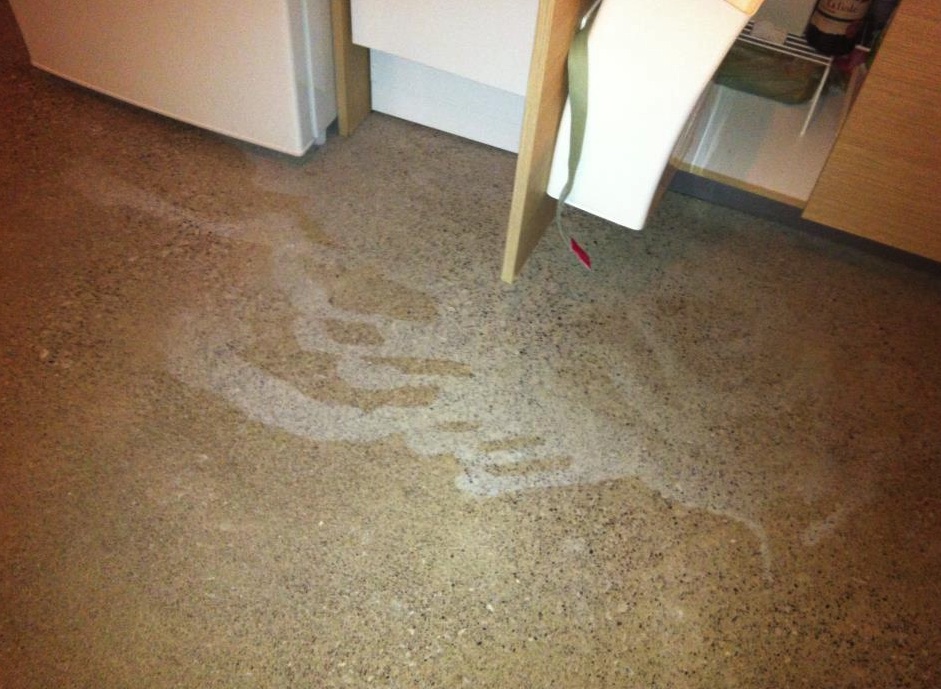How to Clean Battery Acid Off the Garage Floor
Battery acid can leave a terrible stain in your driveway or garage. While cleaning split acid on a garage floor is not difficult, you must be cautious because you’ll be working with dangerous chemicals.
It would help if you cleaned battery acid stains immediately, as the battery acid will damage your concrete by eating away at the surface. Additionally, the longer the stains sets, the harder it is to get out.
Here’s how to clean battery acid off the garage floor:
How to Clean Battery Acid off Concrete
Concrete is a sturdy material that’s tough to damage. However, the acid leaking from machinery and car batteries is a mixture of water and sulfuric acid, which can be very dangerous.
When acids attack components in the concrete, they can also cause staining and physical damage to the surface.
Car batteries are often lead batteries that contain sulfuric acid; therefore, it’s always best to be prepared if you clean up the spills and stains yourself. It’s best to avoid getting this acid on your skin at all costs; however, if it accidentally ends up on your skin, you can wash it with soap and water and monitor the area.
You can avoid any danger during cleaning by wearing protective gloves, proper eye protection, long sleeves, and pants.
Remember that you might also use chemicals such as muriatic acid or bleach when treating the stain; therefore, keep your safety gear handy. Also, remember to open your garage door to have proper ventilation when cleaning.
What Will Neutralize Battery Acid?
The first step in cleaning battery acid on concrete is to neutralize the spilled acid so that you can clean it.
How to Neutralize Battery Acid
A mixture of water and baking soda will help you neutralize battery acid. In addition, baking soda reacts with any remaining acid on your concrete garage floor to create a harmless salt; therefore, the sooner you use it, the better your chances of preventing damage to your concrete driveway.
Once you’ve neutralized the acid, you should be able to wash the remaining matter away with a hose. After rinsing your driveway, examine it for damage. For example, you might see unevenness or pitting where the acid has eaten away at the concrete’s surface.
How to Remove Battery Acid Stains
Sometimes, if you catch the problem quickly enough, there won’t be significant physical damage on your concrete floor, just staining. The stains from battery acid can look whitish or rust-colored against the concrete.
Once you’ve neutralized and washed the area, you try to remove battery acid stains by following these steps:
What You Need:
- Soap
- Bleach
- Rust remover
- Muriatic acid
- Pants
- Long sleeves
- Protective gloves
- Eye protection
- Spray bottle
- Garden hose
- Bristle brush
Procedure:
- Wear protective gloves, long sleeves, and eye protection.
- Fill a spray bottle with chlorine bleach and spray the entire area.
- Let it sit for five to ten minutes.
- Scrub the stain with a bristle brush.
- Repeat the process if need be until the stain is gone.
- If the above process is not working, you can apply rust remover on the stains and scrub to get rid of them.
- You can also opt for muriatic acid to treat the concrete surface; however, you might find yourself acid-washing the entire area to blend out the color differences.
How to Clean Battery Acid on Epoxy
Epoxy garage floors are so popular in garage installations due to their extreme durability. The floors resist motor oil, gear oil, gasoline, and many solvents. You can still clean the floor without staining, even if vehicle fluids sit on the surface of an epoxy garage floor for a long time.
However, battery acid is one of the few chemicals that will hurt the coating of your epoxy garage floor. If you have an electric golf cart, consider getting a Golf Cart Parking Mat or using a cookie sheet underneath the battery compartment.
If golf cart battery acid finds itself on your epoxy garage floor, you can clean it by following this procedure:
What You Need:
- 10% ammonia
- Long sleeves
- Protective gloves
- Eye protection
- Hot water
- Dust mop
- Squeegee
Procedure:
Bases are the opposite of acids; therefore, they neutralize them; ammonia will neutralize the acid stain on your epoxy floor. Here’s how to use it:
- Wear protective gloves, long sleeves, and eye protection.
- Prepare your work area by sweeping the floor with a dust mop to clear away dirt and debris.
- Mix four to five ounces of ammonia per gallon of water, which will be your cleaning solution.
- Use a mop made from synthetic fibers because natural fibers can get trapped in the coating and lead to problems later.
- Mopping with the ammonia solution should get rid of the stain. However, if it doesn’t, you might have to scrub.
- Scrub with a soft-bristled brush and use more ammonia solution on the stain.
- Ensure that the bristles aren’t too inflexible or hard because they can scratch or damage the epoxy.
- Once you’ve removed the stains, rinse the floor with clean water to clear away as much leftover residue as possible.
- Use a squeegee to sop up excess water. You can work from the back of the garage to the front to push the extra water. If this isn’t an option, you can use the squeegee until it becomes saturated, squeeze the water into a bucket, and repeat until the floor is completely dry.
Having acid on your garage floor can be devastating. However, you can use the tips above to remove acid stains from the floor.


